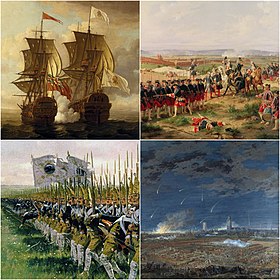The Gentleman's Magazine

The Gentleman's Magazine was a monthly magazine[1] founded in London, England, by Edward Cave in January 1731.[2] It ran uninterrupted for almost 200 years, until 1922. It was the first to use the term magazine (from the French magazine, meaning "storehouse") for a periodical.[3] Samuel Johnson's first regular employment as a writer was with The Gentleman's Magazine.
History
The original complete title was The Gentleman's Magazine: or, Trader's monthly intelligencer. Cave's innovation was to create a monthly digest of news and commentary on any topic the educated public might be interested in, from commodity prices to Latin poetry. It carried original content from a stable of regular contributors, as well as extensive quotations and extracts from other periodicals and books. Cave, who edited The Gentleman's Magazineunder the pen name "Sylvanus Urban", was the first to use the term magazine (meaning "storehouse") for a periodical. Contributions to the magazine frequently took the form of letters, addressed to "Mr. Urban". The iconic illustration of St. John's Gate on the front of each issue (occasionally updated over the years) depicted Cave's home, in effect, the magazine's "office".
Before the founding of The Gentleman's Magazine, there were specialised journals, but no such wide-ranging publications (although there had been attempts, such as The Gentleman's Journal, which was edited by Peter Motteux and ran from 1692 to 1694).
Samuel Johnson's first regular employment as a writer was with The Gentleman's Magazine. During a time when parliamentary reporting was banned, Johnson regularly contributed parliamentary reports as "Debates of the Senate of Magna Lilliputia". Though they reflected the positions of the participants, the words of the debates were mostly Johnson's own. The name "Columbia", a poetic name for America coined by Johnson, first appears in a 1738 weekly publication of the debates of the British Parliament in the magazine.[4][5]
The magazine's long-running motto, E pluribus unum, Latin for "Out of many, one", is thought to have inspired the use of the phrase as an unofficial motto of the United States. Motteux's The Gentleman's Journal had previously used the phrase.[6][7][8]
A skilled businessman, Edward Cave developed an extensive distribution system for The Gentleman's Magazine. It was read throughout the English-speaking world and continued to flourish through the 18th century and much of the 19th century under a series of different editors and publishers. It went into decline towards the end of the 19th century and finally ceased general publication in September 1907. However, issues consisting of four pages each were printed in very small editions between late 1907 and 1922 in order to keep the title formally "in print".
SECOND BATTLE OF CAPE FINISTERE
The British had received word that there was now an incoming convoy arriving from the West Indies. Hawke took his fleet and lay in wait for the arrival of the French. In October 1747, Hawke captured six ships of a French squadron in the Bay of Biscay in the Second Battle of Cape Finisterre. The consequence of this, along with Anson's earlier victory, was to give the British almost total control in the English Channel during the final months of the war.[14] It proved ruinous to the French economy, helping the British to secure an acceptable peace at the negotiations for the Treaty of Aix-la-Chapelle.[15]
War of the Austrian Succession
The War of the Austrian Succession[f] was a European conflict fought between 1740 and 1748, primarily in Central Europe, the Austrian Netherlands, Italy, the Atlantic Ocean and Mediterranean Sea. Related conflicts include King George's War in North America, the War of Jenkins' Ear, the First Carnatic War, and the First and Second Silesian Wars.
Its pretext was the right of Maria Theresa to succeed her father, Emperor Charles VI, as ruler of the Habsburg monarchy. France, Prussia, and Bavariasaw it as an opportunity to challenge Habsburg power, while Maria Theresa was backed by Britain, the Dutch Republic, and Hanover, collectively known as the Pragmatic Allies. As the conflict widened, it drew in other participants, among them Spain, Sardinia, Saxony, Sweden, and Russia.
Prussia occupied the Austrian province of Silesia in 1740, although Austria and Sardinia defeated Spanish attacks in Northern Italy. By early 1748, France held most of the Austrian Netherlands, but was close to bankruptcy due to the cost of the war and a crippling British naval blockade. The stalemate led to the Treaty of Aix-la-Chapelle which confirmed Maria Theresa in her titles but failed to resolve underlying tensions between the signatories, many of whom were unhappy with the terms. France achieved minimal gains for vast expenditure, while the Spanish gained the Duchies of Parma, Piacenza and Guastalla.
Prussia, often considered the clearest winner, acquired Silesia from Austria, an outcome that undermined the long-standing Anglo-Austrian Alliance, since Maria Theresa deeply resented Britain's insistence she cede Silesia to make peace and made it her main objective to regain it. At the same time, the war demonstrated that Hanover, then held in personal union with the British Crown, was vulnerable to Prussian attacks, while many British politicians felt they received little benefit from the enormous subsidies paid to Austria. The result was the realignment known as the Diplomatic Revolution. Austria and France ended the rivalry which had dominated European affairs for centuries, while Prussia allied with Great Britain. These changes set the scene for the outbreak of the Seven Years' War in 1756.
